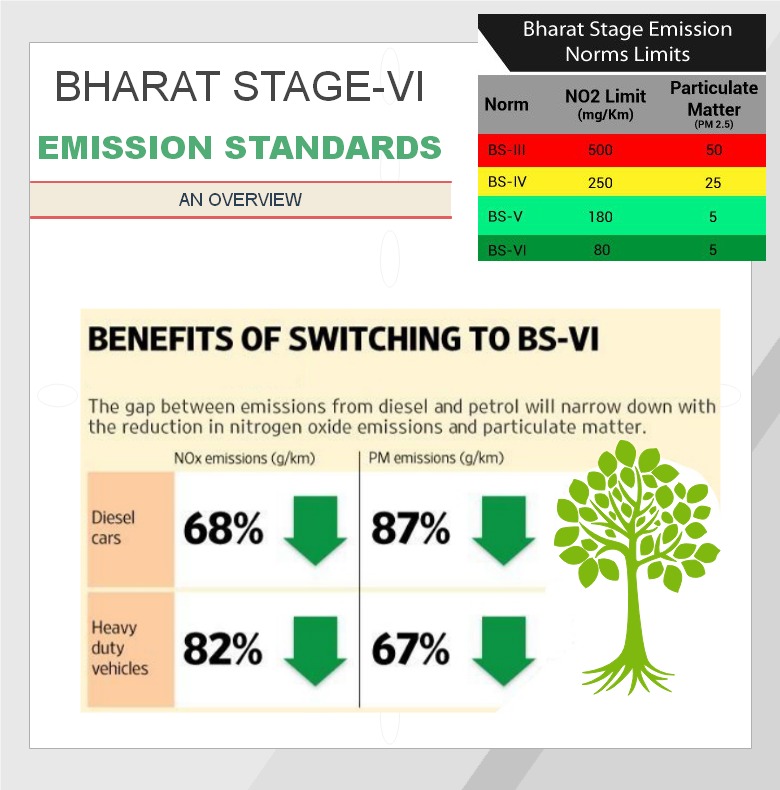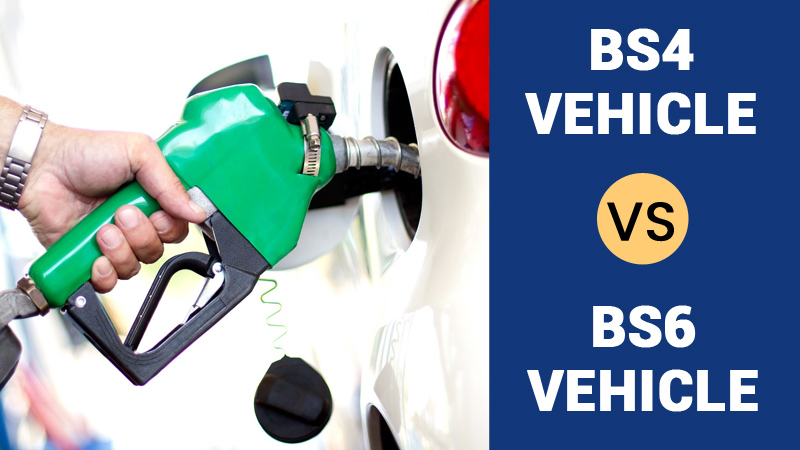Bharat Stage Emission Standards
In the year 2000, the Ministry of Environment, Forest and Climate Change with the Central Pollution Control Board implement emission standards for taking care of the pollutant outputs from motor vehicles. Starting with India 2000 in the year 2000, the first-ever emission norm was introduced. Then BS2 in 2005, BS3, in 2010, BS4 in 2017, and the upcoming BS6 in 2020, the emission standards have been regulated and improved in the past twenty years. The government and the concerned ministry are trying to reduce the emission of harmful gases from combustion engine vehicles in every stage.
BS4 Emission v/s BS6 Emission norms
There were no major changes from BS3 to BS4 emission norms. Bharat Stage 4 predominantly focussed on decreasing the Nitrogen Oxide (NOx) based emissions. Hence, the manufacturers decided to increase the size of catalytic converters in the combustion engine vehicles. It reduces the NOx emissions. Also, BS4 includes Auto HeadLamp feature.

BS6 emission norms are more intense and improved as compared to the BS4 stage. The latest regulations take care of decreasing Sulphur content, and NOx emissions along with hydrocarbon pollutants. Also, BS6 fuel consists of a lower quantity of sulphur and nitrogen content. The Bharat Stage 6 fuel is five times lower in sulphur content than BS4 fuel. Since sulphur in BS4 fuel acts as a lubricant for injectors, BS6 fuel comes with additives which portrays lubricative behavior.
BS6 Petrol Vehicles
In petrol engines, the norms ensure a decrease in emission of NOx by 25%. The number decrease from 80mg/km to 60mg/km of NOx emission. The discharge of particulate matter is also limited to 4.5 mg/km. The BS6 fuel also has a better octane number, hence increasing the quality of fuel. The manufacturers have enhanced the combustion process and air intake in the petrol engines to ensure complete burning of fuel. The introduction of electronic fuel injection in place of the carburetor will improve the vaporization of fuel, and hence enhances the combustion process.
BS6 Diesel Vehicles
There are many restrictions and improvements when it comes to BS6 diesel engines. Firstly the NOx emissions are reduced by 70% from 250mg/km to 80mg/km. The NOx plus hydrocarbons have came down from 300mg/km to 170mg/km, and particulate matter is limited to 4.5mg/km. Diesel Particulate Filter is an add on and reduces soot production in diesel vehicles. Improvement in exhaust systems and the introduction of Selective Catalytic Reduction devices helps to decrease sulpher and NOx emissions.
BS6 fuel in BS4 Vehicles?

The people must not use BS6 fuel in BS4 compliant vehicles. Sulpher acts as a lubricant for BS4 compliant engines, but its content is now reduced in BS6 fuel. Hence the engine can face problems due to lack of lubrication. Similarly, BS4 fuel will decrease the efficiency and economy for the BS6 compliant vehicle. Therefore we recommend using the appropriate type of fuel for the respective engines.
BS6 Emission Norms at present
As per the previous notice, the government restricted the sale of BS4 compliant vehicles from 1st April 2020. But due to the coronavirus outbreak, the nation went under strict lockdown to prevent the spread of coronavirus. Since the lockdown started on 25th March, the automobile dealerships were unable to empty their BS4 stocks. Therefore, Federation of Automobile Dealers Association( FEDA) asked the Supreme Court to extend the sale of BS4 compliant vehicles. Hence the Supreme court gave ten days extension after the lockdown ends.
